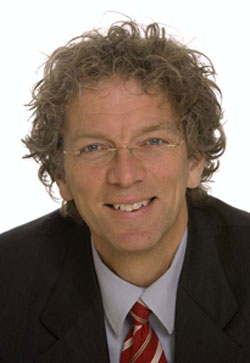A look at Norwegian institutes
There is a great deal of focus on the proportion of women among permanent staff at universities and university colleges in Norway. But it is in business and independent institutes that the proportion of women is the lowest.

Preliminary figures from the research institute NIFU STEP show that the proportion of women in independent research institutes in 2005 was 34 per cent. The research and education sector in business is in an even poorer state, for which the proportion of female researchers last year was 18 per cent.
The research institutes NINA and ECON are two institutes that wish to recruit more female researchers. At least in theory.
Male Dominance
The Norwegian Institute for Nature Research (NINA) with only 19 per cent female researchers in 2005, has one of the lowest proportion of women of Norwegian institutes. The leadership at the institute say that it is a problem.
"Regarding the proportion of women we are below the average, and we are trying to do something about it," says Børre Dervo, head of research at NINA’s branch in Lillehammer, eastern Norway.
First and foremost NINA employs natural scientists, especially biologists, and this partly explains why it is a male dominated environment, he says. Dervo says too that NINA in Lillehammer has set a target of recruiting more women and has written it into their plan of action.
Recruitment strategy
"We are aware that we need to recruit more women and have just been through a recruitment process in which we had expressed a desire to appoint women. At the start of the process we were visited by Linda Rustad, of the Secretariat of the Comittee for Gender Mainstreaming – Women In Science, to give us advice on how to recruit more women. She encouraged us to advertise the position more widely and to give weight to a greater diversity of experience, among other things. Accordingly, we received more applications from women than on previous occasions," he explains.
Dervo adds that, this time, there was a woman on the recruitment committee, who also took part in the interviews.
"There is a tendency for men to unconsciously look for and prefer masculine qualities, so it was important to get a more balanced recruitment process," he emphasizes.
Smaller Networks
The result of the appointment process was that NINA recruited one man and one woman – the man in the researcher position, and the woman in a recruitment position.
"We wish to achieve an even balance of the sexes, but there are other factors to consider in the recruitment process. We are a private organisation, and financial considerations must take priority."
"Are you saying that to employ women is uneconomical?"
"No, but we must look for people who fit in with our research strategy and development. And especially, as a regional institute, we have tough competition for the best people. In order to recruit more women we may have to make some compromises," Dervo says.
He points out that the recruitment process takes place through both job announcements and the use of networks.
"My impression is that women are poorer at using these networks. We are therefore trying to think a little more long term in relation to recruitment by, for example, forming associations with women working on their doctoral degrees."
Valuable Diversity
Administrative director in ECON, Auke Lont, also thinks it important to have both sexes represented. But, in contrast to NINA, ECON has neither set targets nor developed strategies for recruiting women.

"In the recruitment process, we do not use any form of positive discrimination of women, except that if we have two candidates who are equally well qualified, then we would prefer the female candidate," he says.
"Why is it important to have both female and male employees?"
"We believe that it is a strength for a company to have diversity among its people, whether that diversity is in terms of gender, social background, nationality etc. Half of those who are competent in the world are women and they are therefore important to us. You could say that diversity in the labour pool is an important principle," says Lont.
Børre Dervo at NINA also agrees on this principle.
"It is very useful in relation to getting a project completed to have more women employees, inasmuch as different people think differently. In our industry we survive on our creativity, and consequently diversity among employees is very important," he says.
"In addition, it is a fact that more and more often we meet with women when applying for funding for research projects, and in these cases it is a little embarrassing to turn up a with a team made up only of men."
Relevant Experience
Linda Rustad from the Secretariat of the Committee for Gender Mainstreaming says that the experience from working on improving the proportion of women in the higher education sector is relevant to the situation for independent institutes and business.
"In order to have more female applicants you need to advertise widely, in relation to both academic field and rank. It is important to be prepared for employees who wish to extend their qualifications, so that women who are not yet qualified as professors or doctors can be recruited. The next detail in the application process is to look at the criteria one uses to measure quality; for example, you need to decide what experience and in which fields to consider as relevant for the vacant position."
"One important thing that the higher education sector has experienced is that the best results are achieved when gender equality is clearly rooted in the leadership – when it is clear who is responsible for this work and that routines are in place for how this will be reported to the board," Rustad emphasizes.
Many women dropping out
In addition to recruiting women it is also difficult to keep them, according to the representative from ECON.
"Our experience is that it is a greater challenge to hold onto good women than good men", Lont explains, and adds that they do not know why.
"Do you think that it might be because it is more difficult for women to combine family and career?"
"We have the standard parental leave schemes in place, and we are concerned that having children will not hamper our employees’ career opportunities. Besides, we encourage men, too, to take parental leave," Lont explains.
Rustad says that there are other factors besides family responsibilities that must taken care of to prevent the dropping out of female researchers.
"To make a workplace attractive for women it has proved important to build an environment where women are not left on their own, but to have a diverse environment. It is also important that women participate in the development of research strategies and the setting of priorities," she says.
She calls for improved knowledge about independent institutes and business.
"Compared with the higher education sector, the institute and private sectors most probably face special challenges in relation to both recruiting and hanging on to women, but at this time we have little systematic knowledge about this," she rounds up.
Translated by Matthew Whiting, KILDEN
